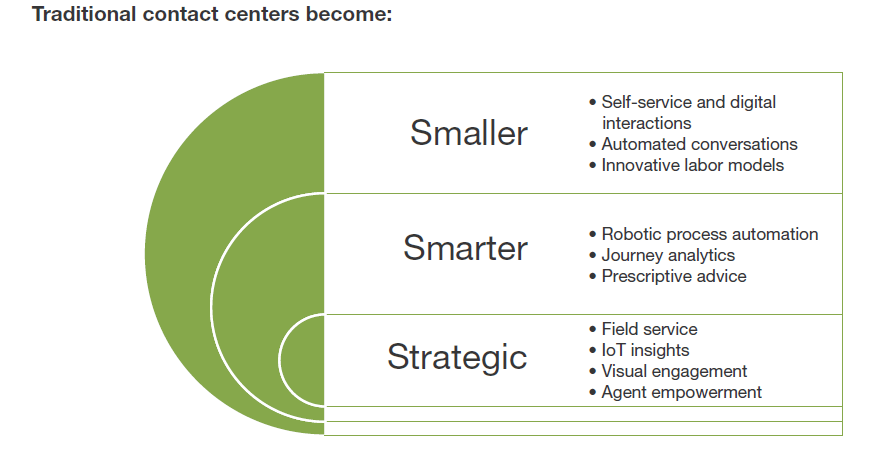
Archive | InBrief
How will virtual agents, robots, RPA, and new technology impact your contact center?
How will virtual agents, robots, RPA, and new technology impact your contact center?
You will be able to guess my approximate age when I tell you that I grew up in a house that had a rotary phone. My fingers were so happy when my family finally installed a few touchtone phones. Now, I don’t even have a home phone, and Alexa is one of my favorite additions to the house. I don’t know how I would survive without Siri. These intelligent agents are making our lives so easy.
Yes, life has changed and so have customer’s expectations. Customer experience comes down to your perception of your interactions with a company. Many of us base our perception on our last amazing, unexpected experience. And, we often share our best (and worst) experiences with friends, family, along with everyone else on social media. I had a terrible experience with a tailor because all my attempts to discuss my concerns went nowhere. I finally decided to do a review on Trip Advisor. Within a day, the owner called me and agreed to the refund I requested if I would remove my review. I love the power of social media!
If you are like me, you want to be able to easily and efficiently interact with companies when it's convenient to you. Additionally, you want the choice of interacting in your preferred channel whether that be via phone call, SMS, chat, IVR, website, etc. Fewer people are picking up the phone to interact with a company, and companies are putting an emphasis on self-service. If you are keen on customer-centricity, you need to think about making strategic investments in customer service technologies - especially within your contact center.
In Kate Leggett’s 2017 Customer Service Trends: Operations Become Smarter And More Strategic, she notes that traditional contact centers are becoming smaller, smarter, and more strategic (see graphic below).Contact centers will continue to get smaller and smarter as self-service, automated engagement, and digital operations mature. Virtual Agents will be used more (often the first point of contact) and can be described as a computer generated, animated, artificial intelligence virtual character that serves as an online customer service representative. It leads an intelligent conversation with customers and responds to questions. Virtual Agents get smarter over time, and free up time for live agents to handle more difficult and emotional issues.
Virtual agents, in combination with strong analytics information, will be able to personalize interactions based on customer preferences (a win for the customer!). They will also provide relevant content and predict your future needs (a win for the contact center and business!). Leading software providers like Salesforce have incorporated their own Artificial Intelligence, called Einstein, into their flagship product Service Cloud. With Service Cloud Einstein, relevant knowledge articles are surfaced real-time and lagging indicators like customer satisfaction can be predicted before a call is over. When trends in data are discovered, Einstein can proactively alert other impacted customers, heading off what could become a larger service issue.
In Harvard Business Review's The Business of Artificial Intelligence, authors Erik Brynjolfsson and Andrew McAfee leave readers with this advice, "Although it is hard to predict exactly which companies will dominate in the new environment, a general principle is clear: The most nimble and adaptable companies and executives will thrive. Organizations that can rapidly sense and respond to opportunities will seize the advantage in the AI-enabled landscape. So the successful strategy is to be willing to experiment and learn quickly. If managers aren’t ramping up experiments in the area of machine learning, they aren’t doing their job. Over the next decade, AI won’t replace managers, but managers who use AI will replace those who don’t."
It’s hard to believe I’ve gone from rotary phones to virtual agents, and that’s only the beginning! The contact center is right in the middle of massive transformation with virtual agents, robotic process automation, IoT, and self-service adding tremendous benefits to both contact centers and customers. And the pace of change over the next decade is going to be phenomenal. To be successful, your business needs to be customer-centric, forward thinking, and agile in your approach to implementing and thinking about the new, latest, and greatest technologies that your customers will expect. You've got to start somewhere! If you want to learn more, please reach out to us.

